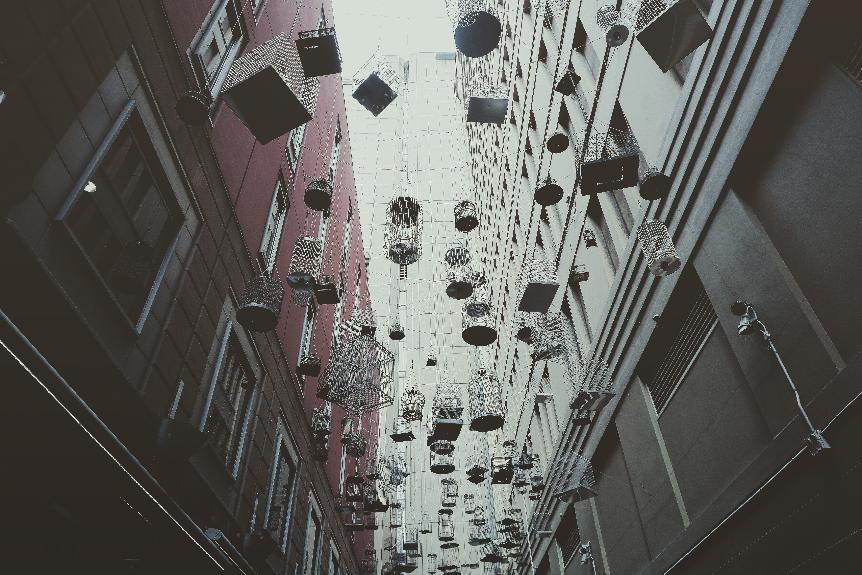No products in the cart.

Are you ready to dive deep into the vibrant world of 1980s urban art? Join us on a journey that takes you through the alleys and streets adorned with graffiti and street art.
Discover the rise of this artistic movement and the influential artists who shaped it. Uncover the iconic locations that became the canvas for these vibrant creations.
Explore the techniques and styles that defined the 1980s street art scene. Prepare to be immersed in the cultural impact of graffiti and street art in the 1980s.
Discover the vibrant origins of graffiti and street art as they emerged and flourished in the urban landscapes of the 1980s. This was a time when the streets became a canvas for sociopolitical commentary, with artists using their spray cans to express their thoughts on pressing issues.
Graffiti, as a form of art, became a powerful tool for urban dwellers to voice their discontent and shed light on societal injustices. It was during this period that the relationship between hip hop culture and urban art truly blossomed.
Graffiti and street art became an integral part of the hip hop movement, with artists using their skills to visually represent the beats, rhymes, and rhythms of the music. This synergy between hip hop and urban art in the 1980s gave birth to a revolutionary art form that continues to inspire and captivate audiences worldwide.
Take a look at some of the influential artists who made a significant impact on the urban art scene in the 1980s.
The 1980s was a time of great creativity and innovation in the world of graffiti and street art, with several controversial figures emerging and pushing boundaries.
One such artist was Keith Haring, whose iconic figures and bold lines became synonymous with the era. Haring's work tackled social and political issues, making him a powerful voice for change.
Another influential artist was Jean-Michel Basquiat, known for his raw and expressive style. Basquiat's collaborations with other artists, such as Andy Warhol, further elevated his status and brought street art into mainstream consciousness.
These artists, along with many others, played a crucial role in shaping the urban art movement of the 1980s.
Preservation efforts played a crucial role in maintaining urban art during this time.
Some of the most notable locations where urban art thrived were New York City's subway system, Brooklyn's Williamsburg Bridge, London's Southbank Centre, Berlin's East Side Gallery, and Paris' Le MUR.
These locations became famous for their vibrant and expressive graffiti and street art, showcasing the changing perceptions of graffiti from vandalism to art.
The preservation efforts in these locations were driven by the recognition of the cultural and artistic value of urban art.
By maintaining and protecting these spaces, they became not only platforms for self-expression but also tourist attractions that attracted visitors from all over the world.
The legacy of these iconic locations continues to inspire and influence urban art today.
Explore the various techniques and styles that characterized 1980s street art.
The 1980s marked a significant shift in street art, with artists embracing bold color choices to make their work visually striking and captivating. Bright, vibrant hues such as neon pinks, electric blues, and fiery oranges became synonymous with the era. These bold color choices not only attracted attention but also reflected the energy and vibrancy of the urban environment in which street art thrived.
In addition to the use of bold colors, the 1980s street art scene saw a surge in graffiti artists incorporating political messages into their work. They used their art as a means to express dissent, critique social and political issues, and challenge the status quo. Graffiti became a powerful tool for activism and a way for marginalized voices to be heard. Whether it was through thought-provoking slogans, impactful symbols, or powerful visual narratives, political messages became an integral part of graffiti art during this time.
As we dive into the cultural impact of graffiti and street art in the 1980s, it becomes evident that these art forms not only captured attention with their bold colors and political messages, but also sparked a revolution in urban expression. The influence of graffiti and street art reached far beyond its visual appeal, igniting a series of debates and controversies surrounding censorship and legal implications.
The rise of graffiti and street art in the 1980s has greatly influenced contemporary urban art movements. Its impact can be observed in the evolution of techniques and the way artists now incorporate these elements into their work.
In the 1980s, graffiti and street artists faced numerous challenges. These challenges stemmed from the impact of 1980s urban art, such as societal stigmatization, legal consequences, and the struggle to gain recognition as legitimate artistic movements.
The emergence of hip-hop culture in the 1980s greatly influenced the popularity of graffiti and street art. Rap music and its portrayal of urban life created a platform for artists to express themselves and gain recognition in the art world.
During the 1980s, graffiti and street artists faced legal consequences for their work. Authorities cracked down on vandalism, leading to arrests, fines, and community service. These actions aimed to deter the spread of unauthorized art in urban areas.
The cultural and social climate of the 1980s greatly influenced the themes and messages in graffiti and street art. The impact of gentrification and the role of women played a significant role in shaping the artwork of the time.
